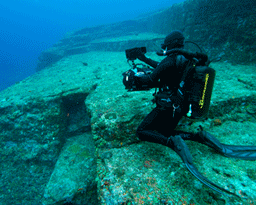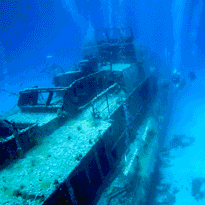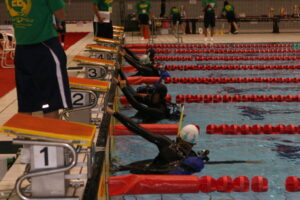
DIVING NEWS
Divers explore rare 400-year-old ship

Picture: Jouni Polkko / Badewanne.
Technical divers have found another well-preserved – and very rare – Dutch-style merchant sailing ship in the Baltic Sea’s Gulf of Finland – and this one could be as much as 400 years old.
Yesterday (21 August) Divernet reported that glass bottles, possibly containing gin, had been the first artefacts brought up by Russian scuba divers from a mid-18th century fluyt. The “Butilochnik” wreck had been found at a depth of 50m two years ago.
The new discovery was made during a seabed survey further west in the Gulf, between Finland’s Hanko peninsula and the Estonian island of Hiiumaa. The wreck also lies deeper, at 85m, and appears to be even older, from the early 17th century.
The Baltic Sea is one of the few places in the world where timber shipwrecks can survive for centuries, because of the protection offered by a combination of low salinity, absolute darkness and very low water temperatures year-round.
Two dives have now been carried out on the shipwreck by scuba divers from the Finnish group Badewanne, which for more than 20 years has been documenting wrecks in the Gulf of Finland (which was known as Badewanne during WW2). When they visited the site, which had been identified during a seabed survey, they had been expecting to find a 20th-century relic from one of the world wars.
Instead the divers were able to identify the largely intact wreck as a fluyt, a narrow type of three-masted cargo ship designed in the Netherlands. Fluyts were unusual in that they were unarmed and had an advanced rigging system that allowed them to be operated by small crews.
Also unusual for the time was that the entire crew occupied the same space between decks and all dined at the same table. The combination of small crew, no guns and large holds was intended to maximise the cargo capacity.
Fluyts dominated the Baltic trading that thrived between the late 16th and mid-18th century, yet finding such shipwrecks is rare.
The divers found the wreck resting upright with most of its rigging scattered around, although a trawl-net appeared to have dislocated the stem, damaging the poop-deck and the top part of the transom.
All the side-planking remained in place, and even damaged parts of the transom decorations lay on the seabed. The vessel is thought to have capsized in a storm or to have sprung a leak.
22 August 2020
The divers showed their stills and video footage to marine archaeologist Dr Niklas Eriksson of Stockholm University in Sweden. He confirmed their identification, though he was unable to tell whether the vessel was Dutch or a local copy of the fluyt design operating solely in the Baltic.
“The wreck reveals many of the characteristics of the fluyt but also some unique features, not least the construction of the stern,” said Dr Eriksson. “It might be that this is an early example of the design.
“The wreck thus offers a unique opportunity to investigate the development of a ship type that sailed all over the world and became the tool that laid the foundation for early modern globalisation.”
The Badewanne team says that it will continue investigating the wreck alongside the Finnish Heritage Agency of Antiquities and Dr Eriksson. There are also plans to study customs archives in Denmark in case the vessel entered the Baltic Sea through Danish waters.

The post Divers explore rare 400-year-old ship appeared first on Divernet.
Read More Diving News Divernet














